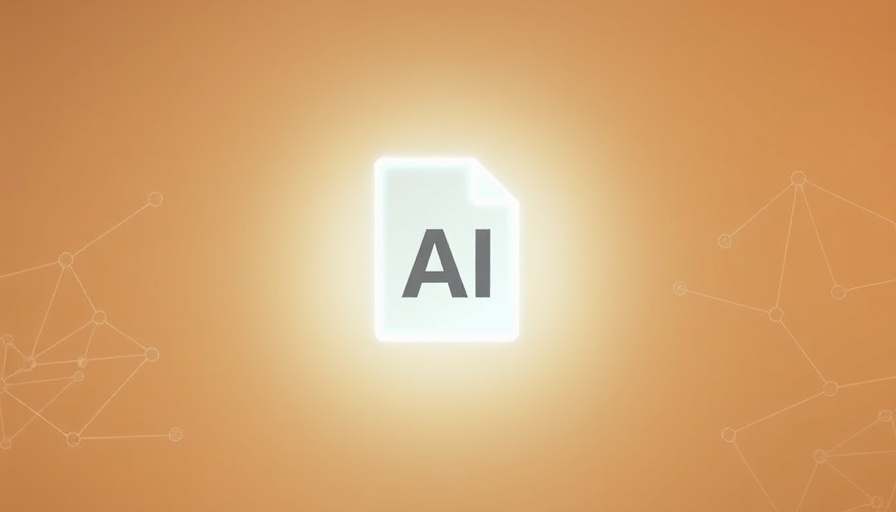
The Evolving Landscape of Deep Reasoning AI
The recent advancements in artificial intelligence, particularly with OpenAI’s Deep Research, showcase a significant shift in the way enterprises are leveraging AI to automate complex tasks and streamline workflows. Released on February 3, 2025, this product integrates large language models (LLMs) with advanced searching capabilities, aiming to produce reports faster and potentially outpacing human analysts in quality.
Understanding Deep Research
What sets Deep Research apart from traditional AI models is its unique architecture that combines reasoning LLMs with agentic retrieval augmented generation (RAG). This approach allows the AI not only to generate responses but to interactively research multiple dimensions of a query. Users can input questions, and the AI responds by generating structured reports that often exceed the quality of human-generated analysis.
One of the most critical features of Deep Research is its capacity to iteratively refine its understanding of the user’s needs by asking clarifying questions. This iterative process represents a paradigm shift in how AI systems handle research tasks, as it requires a more nuanced understanding of context and user intent. Reports produced can range from 1,500 to 20,000 words, featuring citations from a vast array of sources, which can significantly enhance workplace productivity across numerous industries.
The Technology Behind Deep Research: Reasoning LLMs and Agentic RAG
At the heart of Deep Research is OpenAI’s o3 model, which has set new benchmarks in logical reasoning ability. Scoring an unprecedented 87.5% on the ARC-AGI benchmark, o3 is designed to perform complex problem-solving tasks that were previously unmanageable for typical AI models. Complementing this is the agentic RAG technology that autonomously retrieves relevant information from the web, enabling users to receive comprehensive analyses quickly.
Broadening Implications for Various Industries
Financial institutions are among the first to explore Deep Research’s capabilities, particularly in areas like credit risk assessments. Leaders from major banks, such as BNY, recognize the potential of this technology to reshape traditional analytics. As Evan Mollick from Wharton noted, the efficiency gained from using AI can vastly outweigh the occasional inaccuracies in its outputs due to faster research processes.
Anticipating Job Shifts in Knowledge Work
However, the implementation of such advanced AI technology is not without its drawbacks. As companies increasingly adopt these AI solutions, low-skilled knowledge worker roles will likely face significant reductions. Sam Witteveen of Red Dragon highlights the stark reality: being able to procure AI-generated reports for a mere $200, opposed to the traditional $20,000 consulting costs, may lead many analysts to find themselves out of work. This raises critical questions about job creation and loss as technology continues to evolve.
A Historical Perspective on Disruption
Historically, technological revolutions have displaced existing jobs while simultaneously creating new opportunities. The transition from horse-drawn carriages to automobiles is a prime example of such disruption. OpenAI's CEO, Sam Altman, succinctly addressed this connection by expressing that Deep Research could potentially fulfill "low-single-digit percentages" of tasks currently handled by human knowledge workers.
Navigating Current and Future Challenges
The early reactions to Deep Research indicate its potential impact could reach any industry reliant on data and knowledge work—from healthcare to retail and manufacturing. However, a close examination reveals that areas requiring a deep human touch, such as hedge fund research or specific industry insights, are less likely to be threatened. Analysts who primarily rely on easily accessible information may soon be a thing of the past.
Conclusion: The Competitive Landscape
OpenAI’s Deep Research marks a significant turning point for the future of AI in knowledge-intensive fields. Companies that embrace this technology can expect not only to improve operational efficiency but also gain a crucial competitive advantage. As we witness these advancements, the question remains: how will organizations reconcile the advantages of AI with the socioeconomic implications of job displacement?
 Add Row
Add Row  Add
Add 




 Add Row
Add Row  Add
Add 

Write A Comment